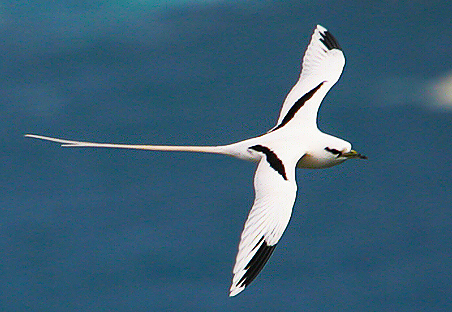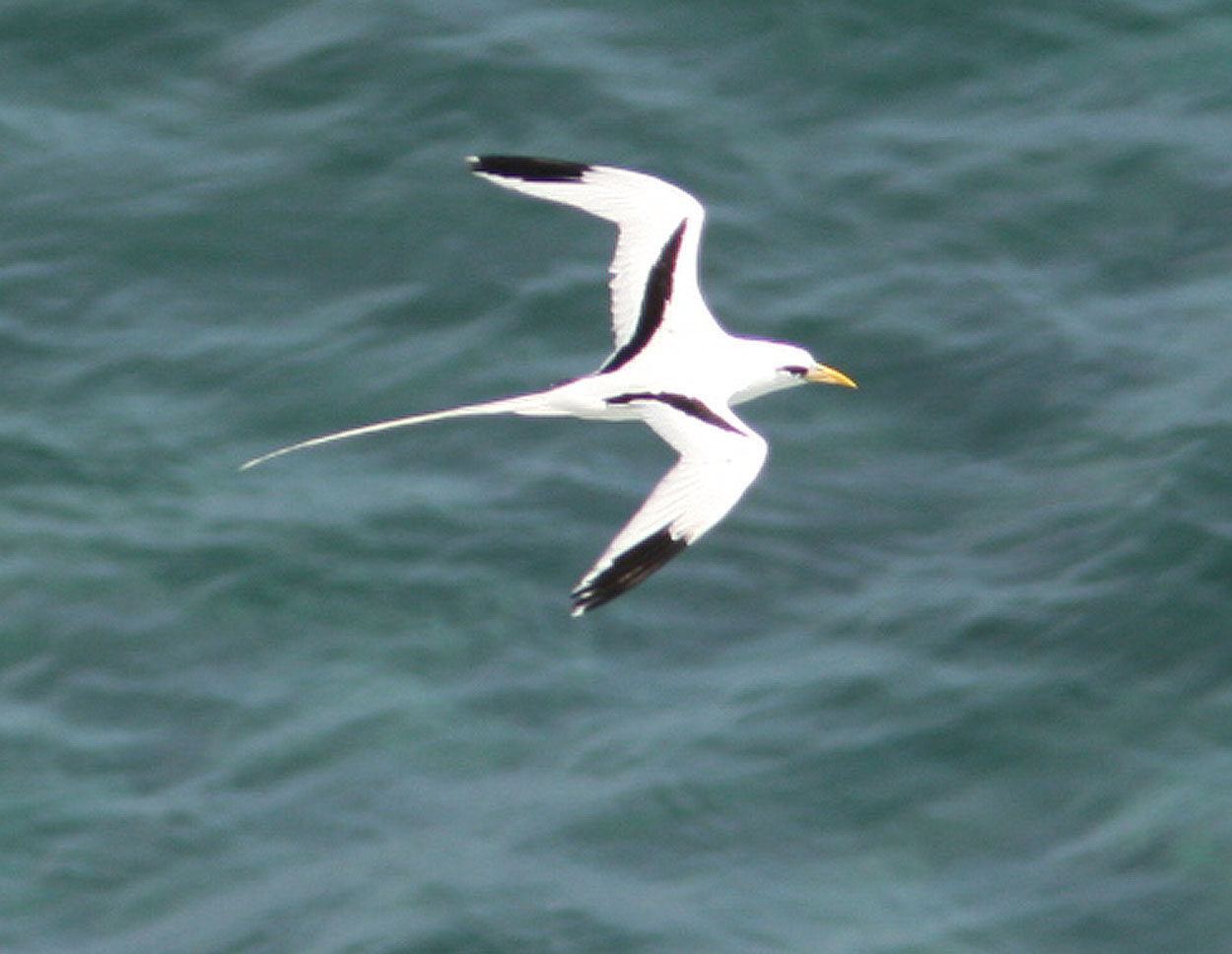
Phaethon lepturus
TAXONOMY
Phaeton lepturus Daudin, 1802, Mauritius.
OTHER COMMON NAMES
English: Golden bosunbird, yellow-billed tropicbird; French:
Phaйton а bec jaune; German: WeiЯchwanz-Tropikvogel;
Spanish: Rabijunco Menor.
PHYSICAL
CHARACTERISTICS
Adult body length
(including streamers)
is 29 in (74 cm),
wingspan 37 in
(94 cm), and weight
11 oz (0.30 kg). The
overall body color
is white, with black
markings on the upper
wings, a black
eye-stripe, and a
reddish (rarely yellow)
bill. Juveniles
have a pale-cream
bill.
DISTRIBUTION
Tropical and warm-temperate oceans of the world.
HABITAT
Tropical and warm-temperate oceans of the world, especially
in coastal waters.
BEHAVIOR
An excellent flier that commonly feeds by shallow plunge-dives
and by catching flying-fish on the wing. They have a rattling
call in flight, and seldom glide.
FEEDING ECOLOGY AND DIET
Small fish, squid, and larger marine invertebrates, which are
caught above, at, or just under the water surface. Tends to feed
closer to shore than other species of tropicbirds.
REPRODUCTIVE BIOLOGY
Breeds on remote tropical islands. A single egg is laid and incubated
by both adults. Chicks have white, buff-gray, or bluegray
down. Fledging in 70–85 days.
CONSERVATION STATUS
Not threatened.
SIGNIFICANCE TO HUMANS
None known.
Other popular Animals
Photo Gallery of - White-tailed tropicbird




 Animalia Life
Animalia Life